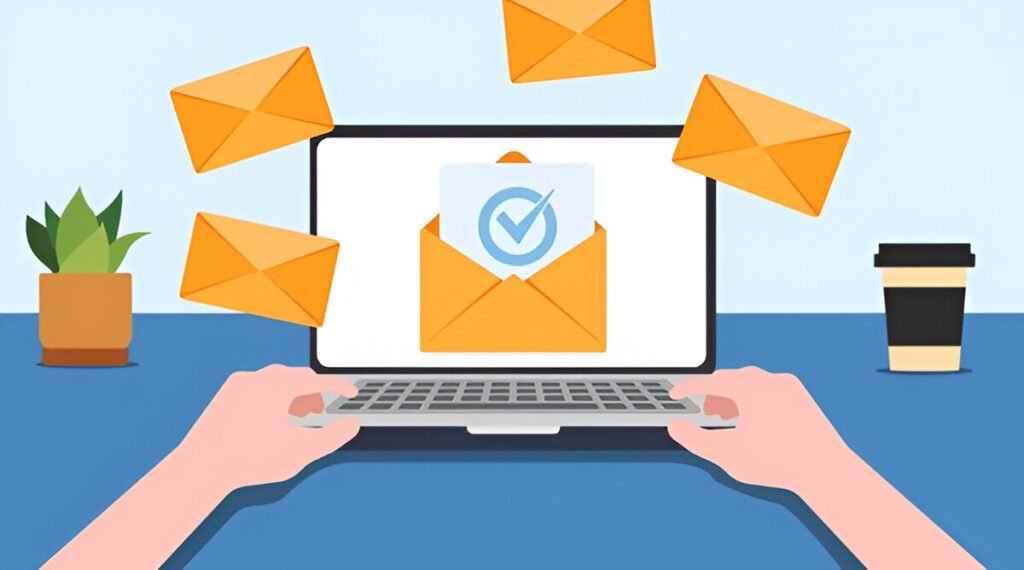Introduction
Imagine this: You’ve just finished crafting an important email to your professor about a late assignment or to a recruiter about a job application. You hit send, feeling confident—only to realize you forgot to attach the document and misspelled their name. Ouch.
In today’s academic and professional world, how you write an email often leaves a bigger impression than you think. For students and young professionals, mastering email etiquette for students is more than just about spelling and grammar. It’s about building credibility, showing respect, and making sure your message is actually read and acted upon.
This article will guide you through the why, what, and how of writing professional emails that get taken seriously—whether you’re communicating with professors, employers, or colleagues.
Why Email Etiquette Matters
Email is still the most common form of formal communication in both academia and the workplace. According to a 2024 Statista report, over 347 billion emails are sent every day globally, and professionals spend up to 28% of their workweek managing emails. That means your email is competing with dozens—sometimes hundreds—of others in someone’s inbox.
For students and young professionals, strong email etiquette offers several benefits:
-
Builds credibility – A well-written email shows you’re serious, organized, and respectful.
-
Strengthens relationships – Good communication sets a positive tone for ongoing interactions.
-
Improves response rate – Clear, concise, and polite emails are more likely to get timely replies.
On the flip side, a poorly written email can delay your response, damage your reputation, or even close doors to opportunities.
Common Struggles Students Face with Email Etiquette
When students transition from casual messaging apps to formal email, they often face challenges:
-
Informal tone – Writing like you text a friend (“Hey prof, what’s up?”) sends the wrong signal.
-
Poor structure – Long, unbroken paragraphs make it hard for the reader to find key details.
-
Lack of clarity – Missing information, unclear requests, or vague subject lines lead to confusion.
-
Overly casual greetings – Starting with “Hiya” or skipping greetings entirely can seem disrespectful.
These small mistakes can add up, making you appear inexperienced—even if your actual work is excellent.
How to Master Email Etiquette for Students and Young Professionals
1. Start with a Clear Subject Line
The subject line is your first impression. Keep it short but specific so the recipient knows exactly what to expect.
Instead of: Question
Better: Question About ECON 205 Assignment Due April 15
2. Use a Professional Greeting
Always open with a greeting and address the recipient by name if you know it. For professors or formal contacts, use titles like “Dr.” or “Professor.”
Example: Dear Professor Ahmed,
Avoid: Hey or Yo
3. Introduce Yourself Briefly (If Needed)
If you’re emailing someone for the first time, state who you are and your context in one short sentence.
Example: My name is Sarah Khan, a second-year student in your Psychology 102 course.
4. Be Clear and Concise
Get to the point within the first two sentences. Long-winded introductions can cause the recipient to skim or ignore the message.
Example: I’m writing to request an extension on the term paper due next Monday due to a medical emergency.
5. Keep the Tone Polite and Respectful
Use “please” and “thank you” naturally in your message. Avoid using all caps—it feels like shouting.
Instead of: I NEED THIS ASAP
Better: Could you please send me the document by Friday? I’d appreciate it.
6. Format for Easy Reading
Break your email into short paragraphs. Each should focus on one idea—this makes it easier for the recipient to scan and respond.
Example: One paragraph for your request, another for any background details, and a final one for closing remarks.
7. Close Professionally
End with a polite closing such as: Best regards, or Sincerely, followed by your full name.
Example:
Best regards,
Sarah Khan
Student, Department of Psychology
Case Example: Bad vs. Good Email
| Scenario | Bad Email | Good Email |
|---|---|---|
| Subject | Help | Question Regarding ECON 205 Assignment |
| Greeting | Hey | Dear Professor Ahmed, |
| Body | Can you tell me what to do for the homework? Thanks. | I hope this email finds you well. I wanted to clarify the instructions for the ECON 205 assignment due next Monday. Specifically, I’m unsure about the data sources we should use. Could you please advise? |
| Closing | Thx | Best regards, Sarah Khan |
This simple shift in tone, clarity, and structure makes your email more professional and increases the likelihood of a helpful response.
Tools and Resources to Improve Email Etiquette
| Tool/Resource | Purpose | Why It Helps Students |
|---|---|---|
| Grammarly | Grammar and tone checker | Catches errors and suggests more professional wording |
| Boomerang for Gmail | Schedule and track emails | Helps you send emails at optimal times and follow up |
| Hemingway Editor | Simplifies text | Makes your writing clearer and easier to read |
| University Writing Centers | Personalized feedback | Offers one-on-one guidance on improving your emails |
| Purdue OWL | Writing and formatting guide | Trusted academic source for communication tips |
Expert Advice: What Professionals Say
According to the Harvard Business Review, clarity and brevity are the top two qualities of effective workplace communication. A 2023 LinkedIn survey found that 67% of hiring managers say poorly written emails from candidates negatively impact their hiring decisions.
Career coach and author Alison Green emphasizes:
“When you email someone professionally, you’re essentially creating a snapshot of your judgment, competence, and professionalism. Every sentence you write should reinforce that you’re a capable and thoughtful communicator.”
These insights underline the fact that email etiquette is not just about avoiding mistakes—it’s about building a brand for yourself as a reliable communicator.
Final Thoughts
Mastering email etiquette for students is like learning how to dress for an interview—you might not be judged solely on it, but it absolutely influences how others perceive you.
Here’s what you can start doing today:
-
Always use a clear, specific subject line.
-
Address the recipient respectfully and appropriately.
-
Get to the point while maintaining a polite tone.
-
Use short paragraphs for better readability.
-
Proofread before hitting send—small errors can send the wrong message.
The more you practice these habits, the more natural they’ll become. Over time, your emails will stand out in busy inboxes for the right reasons.
FAQs
Q: Is it okay to use emojis in professional emails?
A: Generally, no—especially when emailing professors or employers. Emojis can be seen as too casual for formal settings.
Q: How soon should I reply to an email?
A: Within 24 hours is ideal, even if it’s just to acknowledge receipt and say you’ll follow up.
Q: Should I always include my full name in my signature?
A: Yes. For academic or job-related emails, always sign off with your full name and, if relevant, your student ID or job title.


